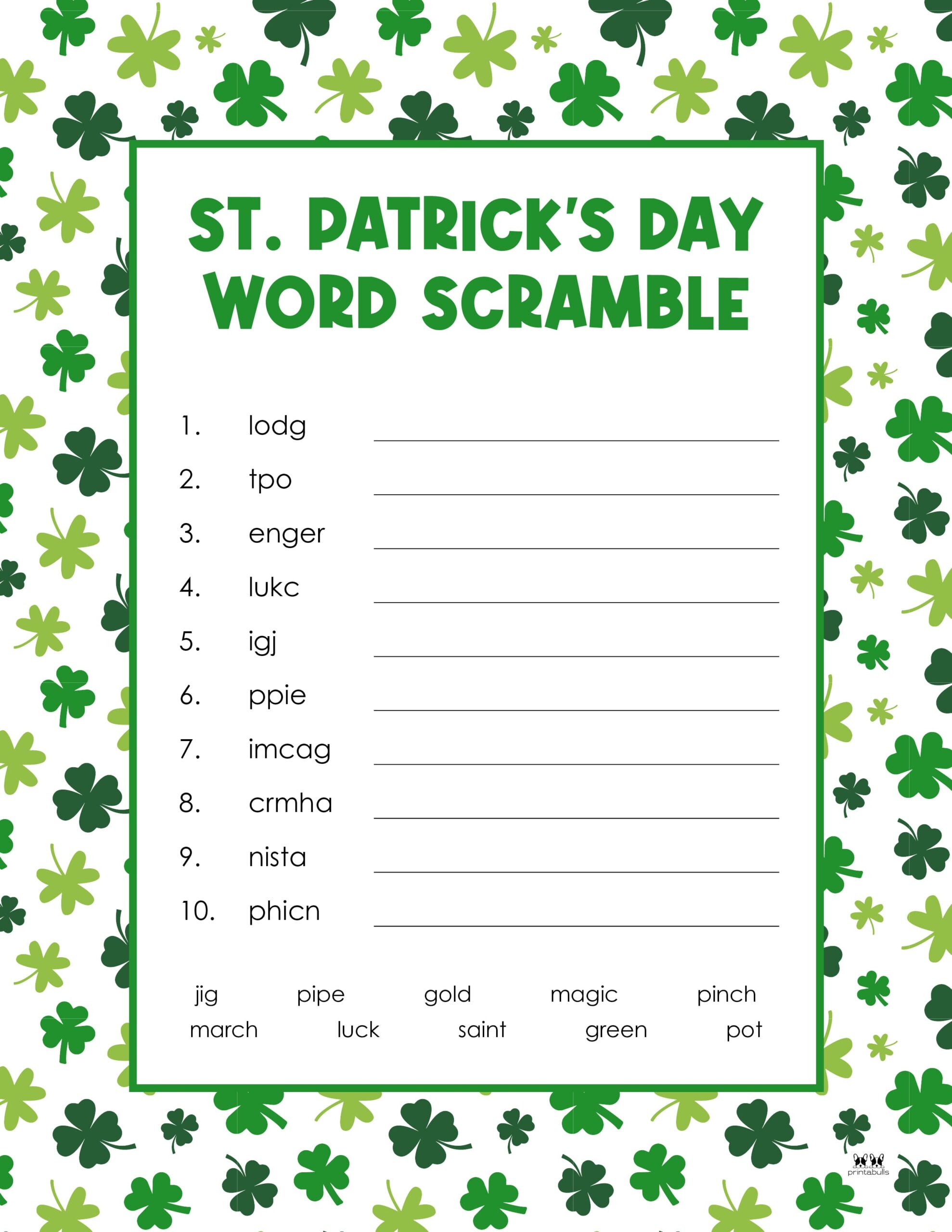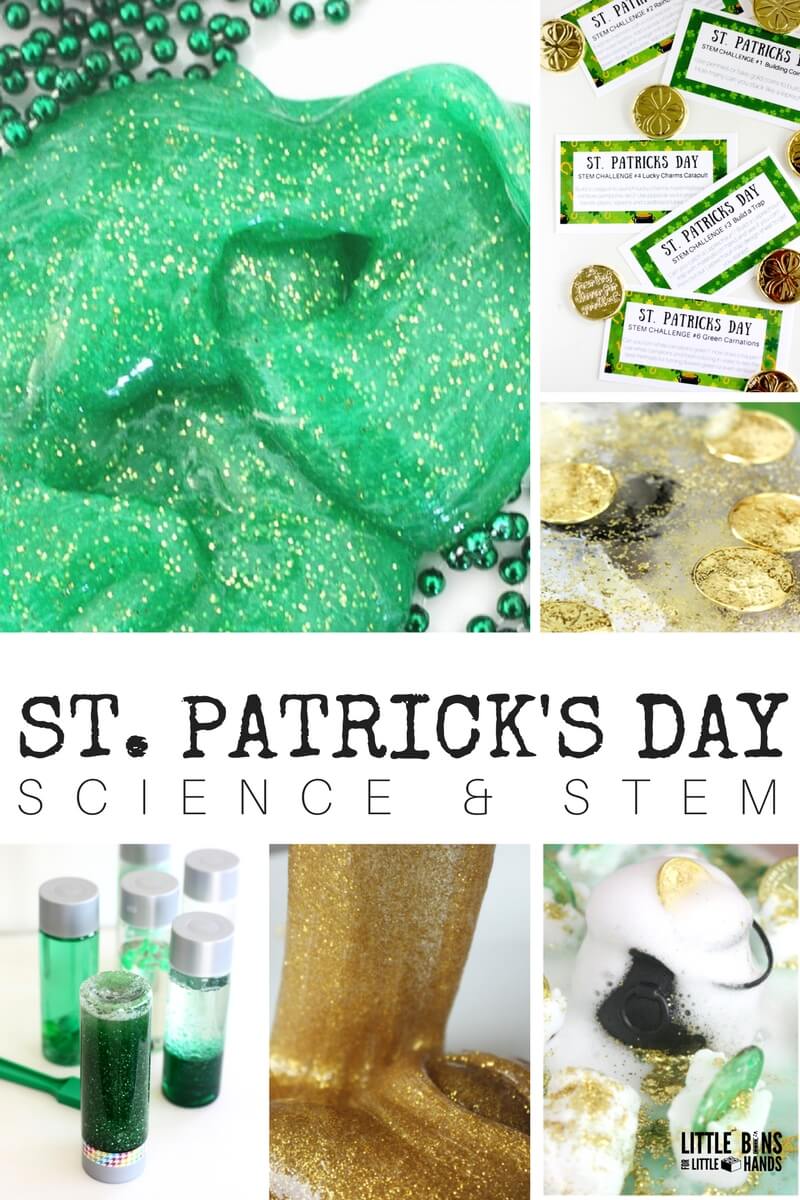Gallery
Photos from events, contest for the best costume, videos from master classes.
 |  |
 |  |
 |  |
 |  |
 |  |
 |  |
Check Out More Fun St Patrick’s Day Ideas. Have fun with leprechauns, rainbows, pot of gold and all things green this St Patrick’s Day! Plus, more ways to make slime for St Patrick’s Day! Free St Patrick’s Day Printables; St Patrick’s Day Math Worksheets; St Patrick’s Day Cards: STEM Challenges; Leprechaun Trap Kits These St. Patrick’s Day science activities for kids are a fun way to explore a variety of science topics. Kids can do experiments and activities related to Saint Patrick’s Day themes: Leprechauns; Shamrocks (3 or 4 leaf clover) Rainbows; Gold; Add these St. Patrick’s Day science experiments to your March lesson plans. Adding in 17 St. Patrick’s Day Science Activities. Celebrate St. Patrick’s Day with a twist of science through our curated list of 17 engaging activities, neatly organized by scientific domain to meet a variety of your curriculum needs. For more fizzing fun, see 5 Fizzing, Foaming, and Bubbling Science Projects! Many of these activities can easily be given a colorful twist to work for St. Patrick's Day!) Gold Getaway-Mobile: Build and "drive" a car that speeds along with the wind. (For other fun vehicles students can make and test, see Rev Up STEM Learning with Car Science 7. St. Patrick’s Day Science Puzzles: Provide students with St. Patrick’s Day-themed science puzzles & word searches to solve. 8. St. Patrick’s Day Science Kahoot: Create a St. Patrick’s Day-themed Kahoot quiz with science-related questions for students to answer individually or in teams. This is a one of the best low prep St Patricks This festive-colored experiment is perfect for St. Patrick’s Day. Let your kiddos learn the science behind “capillary action” and how it plays into the real world. Get more details from Walking Cartwright here. Related: 23 St. Patrick’s Day Jokes for Your Little Leprechaun St Patricks Day Science. Make the most of this Saint Patricks Day by adidng in a fun St Patricks Day Science to your st patricks day theme! This Rainbow Science experiment is fun for toddlers, preschoolers, kindergartners, and grade 1 students. This simply acitivyt is sure to be a hit this March! Every little leprechaun needs a black pot! Try our St Patrick’s Day fizzing science activity with your little leprechauns this month. We love fizzing science experiments for any holiday, and this leprechaun rainbow activity is perfect for an easy to set up and inexpensive St Patrick’s Day science experiment! Another fun St. Patrick’s day science project is turning water into liquid gold. It’s the kind of experiment perfect for a sneaky leprechaun, because it doesn’t make real gold. Instead, it’s a sparkly mineral called orpiment. Rainbow Science for St. Patrick’s Day. So, the end of the rainbow is where the leprechaun stashes his gold. DIY St. Patrick’s Day Slime Experiment. Get into the St. Patrick’s Day spirit with a lucky twist on DIY slime! Create a green, glittery, gold-speckled slime perfect for celebrating the holiday while exploring the science of polymers. Your kids will not be disappointed by these fun St. Patrick’s Day Fizzing Pots from Little Bins for Little Hands. Enjoy another fizzing St. Patrick’s Day science experiment with this fun fool’s gold from Pre-K Pages. For more sensory science check out this St. Patrick’s Day Sensory Bottle from The Educator’s Spin on It. Magic Milk Science For St Patrick’s Day. Simple science can be explored all year round with fun themes to make it new and engaging each time! Even something as simple as adding a cookie cutter creates a sense of excitement for young kids. St. Patrick’s Day science ideas are perfect for an effortless indoor March activity. St. Patrick’s Day, celebrated on March 17 each year, is known for its parades, shamrocks, and a whole lot of green. It’s a day when people around the world embrace Irish culture — whether they have Irish heritage or not. But behind all the revelry, St. Patrick’s Day has a deep and fascinating history that goes far beyond the modern celebrations. Some of the traditions we associate with Awesome collection of St. Patrick's Day science activities that kids will love! Learn rainbow science and create rainbows using water, paper, CD's, candy, slime, and more! This fun kids' science for St. Patrick's Day is perfect for science centers or classroom parties. Use rainbows, leprechauns, and shamrocks to learn! Forget about luck – figure out WHY things work the way they do with these fun, colorful St. Patrick’s Day science experiments for kids. We’ve compiled a super fun list of green and rainbow-themed experiments to get your kids excited about science. Are you looking for something specific this St. Patrick’s Day? This list of St. Patrick’s Day science activities for preschoolers is just the right amount of specific you need if you’re looking for some fun science ideas for your homeschool lessons. If you want more activities for your kids this St. Patrick’s Day, check out my list of St Patrick’s Day STEM Activities. Get ready to add a little luck to your STEM learning! St. Patrick’s Day is the perfect time to explore science, technology, engineering, and math with hands-on, festive challenges. St Patrick’s Day Science Experiments MAKE SURE TO CHECK OUT ST PATRICK’S DAY STEM ACTIVITIES! Leprechaun Toothpaste. The result is a warm, foamy eruption—a visual demonstration of a chemical reaction that also releases heat, making it an example of an exothermic reaction. St. Patrick’s Day Puzzles & Activity Pages. Free printable St. Pat’s puzzles and activity pages. These fun logic games will have your second-grade, third-grade, and fourth-grade students building vocabulary, spelling, and writing skills while having fun learning. 25+ St. Patrick’s Day science activities and STEM projects for kids that are easy to set up and fit into your available time, even if it’s limited! Printable leprechaun theme STEM activities that are simple but engaging for home or classroom.
Articles and news, personal stories, interviews with experts.
Photos from events, contest for the best costume, videos from master classes.
 |  |
 |  |
 |  |
 |  |
 |  |
 |  |